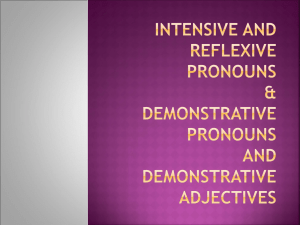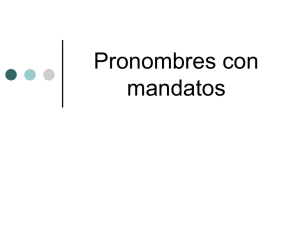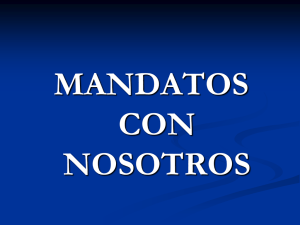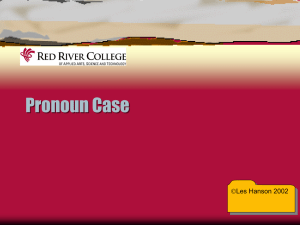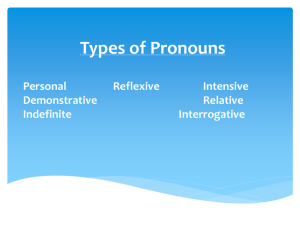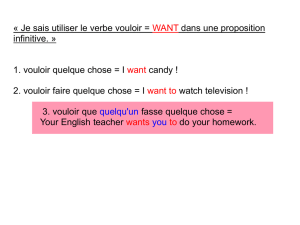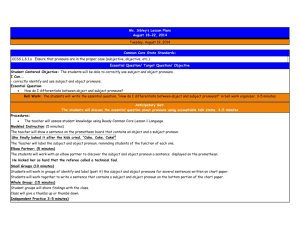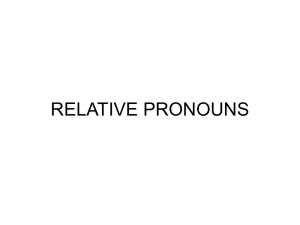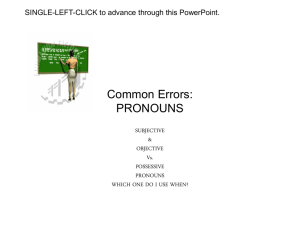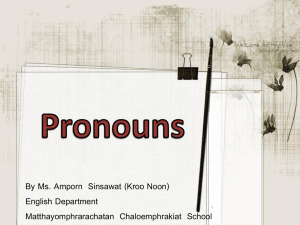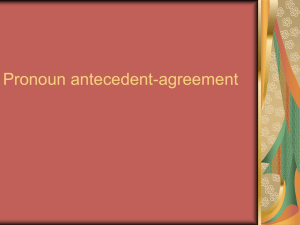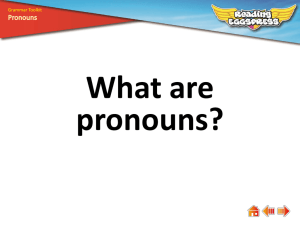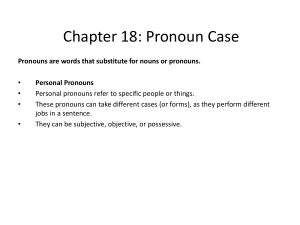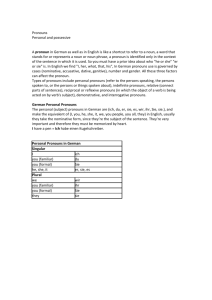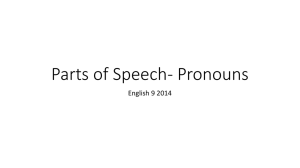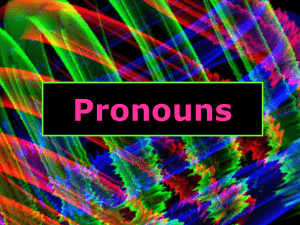Pronouns - English For Life
advertisement
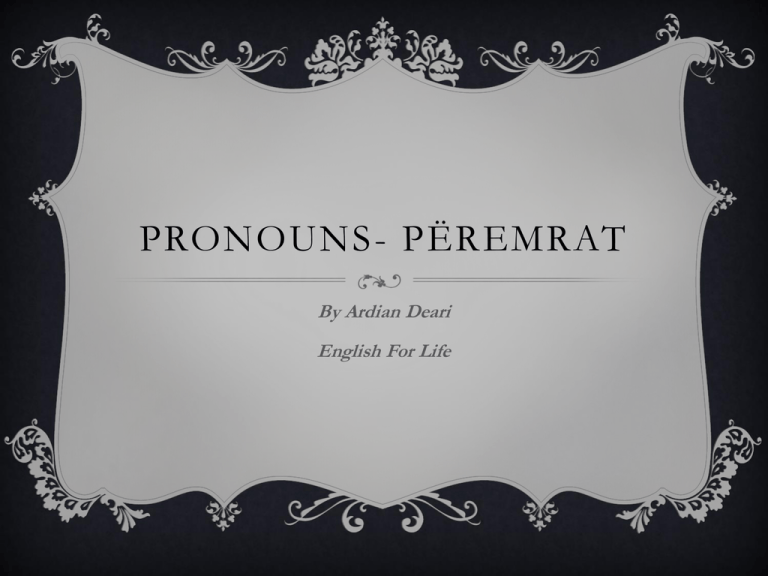
PRONOUNS- PËREMRAT By Ardian Deari English For Life PRONOUNS The term 'pronoun' covers many words. There are many different kinds of pronouns. In general, these do not cause difficulties for native English speakers. The list below is mainly for reference purposes. Fjala ‘peremer’ perfshine shume fjale tjera. Ka disa lloje peremrash. Ne pergjithsi keto nuk shfaqin probleme per folesit burimore te gj. angleze por per ata te huajt. Ne prezantimet e rradhes keni peremrat DEMONSTRATIVE PRONOUNS PEREMRAT DEFTOR These pronouns are used to demonstrate (or indicate).This,that,these and those are all demonstrative pronouns. This- nje send dhe afer That – nje send dhe larg These – shume sende dhe afer Those shume sende dhe larg Examples: This is the one I left in the car. (In this example, the speaker could be indicating to a mobile phone, in which case, the pronoun "this" replaces the words "mobile phone".) Shall I take those? INDEFINITE PRONOUNS PEREMRAT E PACAKTUAR Unlike demonstrative pronouns, which point out specific items, indefinite pronouns are used for non-specific things. This is the largest group of pronouns.All,some,any,several,anyone,nobody,each,both,few,either,none,one and no one are the most common. Example: Somebod ymust have seen the driver leave. (somebody - not a specific person) We are all in the gutter, but some of us are looking at the stars. (Oscar Wilde) I have nothing to declare except my genius. (Oscar Wilde) POSSESSIVE ADJECTIVES AND P O S S E S S I V E P RO N O U N S Possessive Pronouns- Mine, yours, his, hers, its, ours, yours, theirs. This bag is mine. Possessive adjectives are used to show possession. As they are used as adjectives. My, your, his, her, its, our and their are all possessive adjectives. Ex: This is my bag. Have you seen her book? (In this example, the pronoun "her" replaces a word like "Sarah's".) RELATIVE PRONOUNS PEREMRAT LIDHORE Relative pronouns are used to add more information to a sentence. Which, that , who(including whom and whose) and where are all relative pronouns. Examples: Dr Adam Sissons, who lectured at Cambridge for more than 12 years, should have known the difference. (In this example, the relative pronoun "who" introduces the clause "who studied at Cambridge for 12 years" and refers back to "Dr Adams Sissons".) The man who first saw the comet reported it as a UFO. (In this example, the relative pronoun "who" introduces the clause "who first saw the comet" and refers back to "the man".) RECIPROCAL PRONOUNS PEREMRAT RECIPROK Reciprocal pronouns are used for actions or feelings that are reciprocated. The two most common reciprocal pronouns are each other and one another. Perdoren per te shprehur veprimet apo ndjenjat te cilat ndodhin ne menyre te pernjehershme apo reciprokisht. Examples: They like one another. They talk to each other like they're babies. REFLEXIVE PRONOUNS PEREMRAT VETVETOR A reflexive pronoun ends...self or...selves and refers to another noun or pronoun in the sentence. The reflexive pronouns are: myself, yourself, herself, himself, itself, ourselves, yourselves and themselves. Example: John bakes all the bread himself. (In this example, the reflexive pronoun "himself" refers back to the noun "John".) THE END Thank you for being patient

